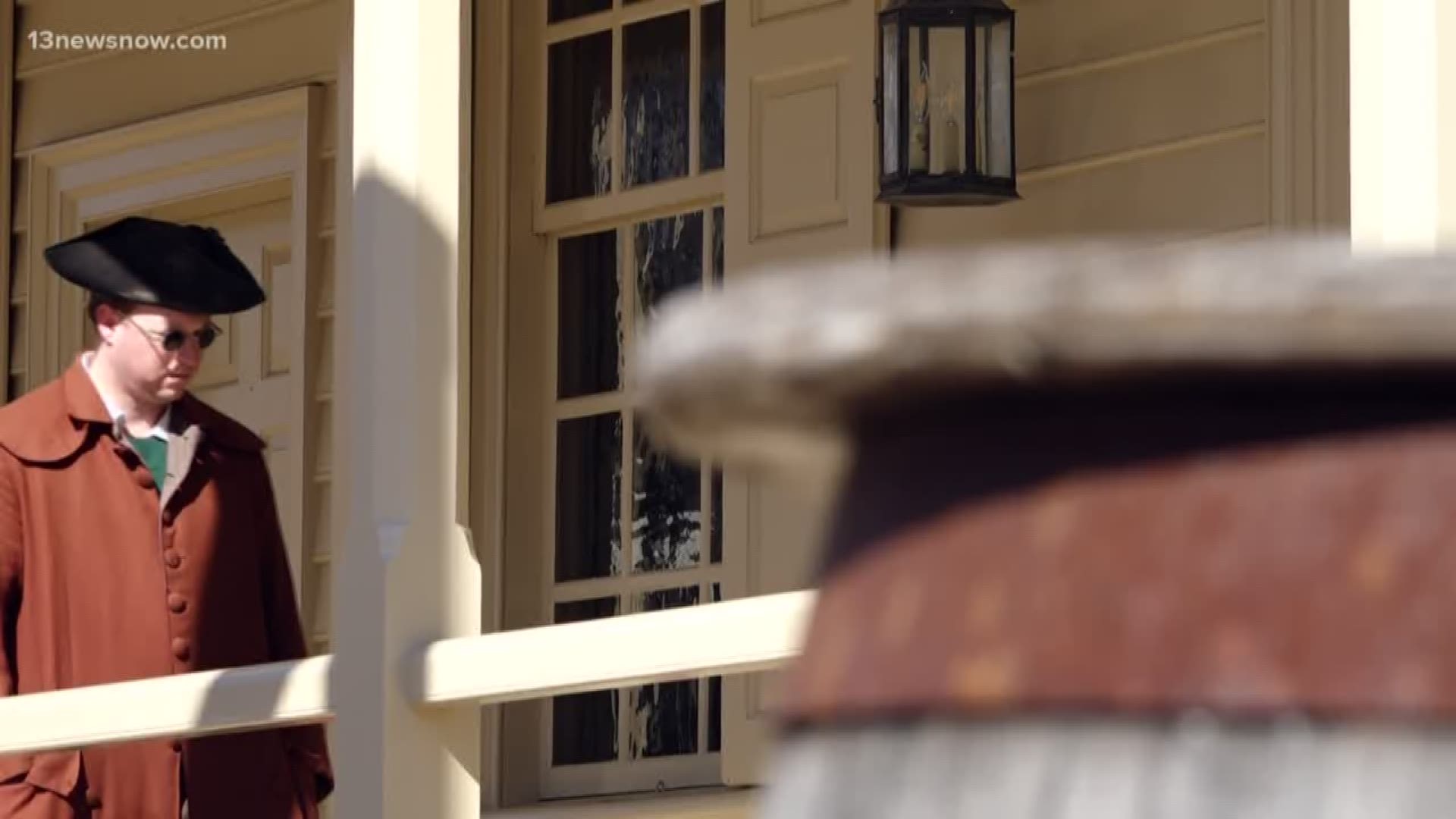WILLIAMSBURG, Va. — Colonial Williamsburg makes use of the convenience of modern technology while staying true to its mission of preserving the historical accuracy it presents to people in Virginia's colonial capital.
"We hide a lot of these things. We excel at hiding things from visitors!" said Matt Webster, Director of Preservation and Research.
Webster told 13News Now there's much more than painting and cleaning when it comes to maintenance.
"At the very beginning, there’s a lot of research – understanding the buildings, understanding the materials and how best to treat those to make sure that they survive," Webster explained.
One of the biggest challenges comes from the amount of foot traffic that comes through the historic city.
Webster noted, "We have buildings that have over 400,000 visitors per year. When you consider your normal house, you don’t have that many people coming through it in a year or the entire lifetime of your house."
In order to combat the visitor impact on the buildings, the Colonial Williamsburg Foundation does "preventive maintenance closings which take care of the wear and tear of being open to the public." The frequency of closings depends on the number of visitors each building sees. It closes more frequently toured buildings annually. Additionally, cleaning and maintenance crews are in many locations daily to prepare for the day ahead.
James Zilius, Manager of Interior Collections and Care, pointed out a feature in the coffeehouse that most may miss.
"What we’ve done is affixed a film onto the windows that you can barely see," Zilius said.
The film blocks ultraviolet light and reflects heat. Hidden sensors in different buildings measure temperature and humidity.
The team at the Preventive Conservation Lab, which is located away from the historic area, makes every decision there with preservation in mind. That includes when it comes to choosing the type of storage containers it uses. They have to be nonacidic.
Zilius explained, "The acid would leech into paper and end up degrading the paper or textiles or several of the other artifacts we might have."
All the work comes down to one thing: protecting and preserving the stories of the past.

